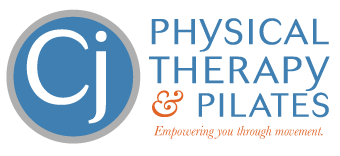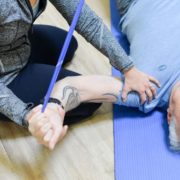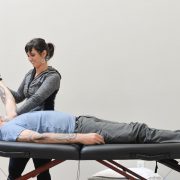Beyond Cortisone: Healthier Options for Lasting Shoulder Pain Relief
Shoulder pain can be one of the most frustrating problems to deal with.
At first, it’s just an annoyance. But when it starts interfering with your sleep or preventing you from doing the things you love, you can’t help but wonder if it’s time to do something more invasive – like getting a cortisone shot.
Cortisone injections can seem appealing – they’re quick, easy, and often provide relief. Anytime I see a post on Facebook asking, “What should I do about my nagging shoulder pain?” cortisone shots almost always come up as the go-to answer. But just because they’re common doesn’t mean they’re the best solution. In fact, relying on them too often could actually make your shoulder worse.
Why Cortisone Falls Short
Cortisone shots are meant to reduce inflammation – and if inflammation is truly what’s driving your shoulder pain, they can help. The problem is that in most cases, inflammation is only a symptom. The real culprit is usually mechanical: poor movement patterns, overuse, or imbalances that leave the structures in your shoulder irritated and overworked. In those situations, cortisone might give you short-term relief, but the pain will always come back until the root mechanical problem is fixed. Even worse, repeated cortisone shots can actually weaken your tendons and damage your cartilage over time.
So what do you do if you’ve got persistent shoulder pain but don’t want to rely on cortisone?
Thankfully, there are healthier and more effective options available – in the family of regenerative medicine. These treatments don’t just cover up inflammation, they actually stimulate your body’s ability to heal it – which works whether your primary problem is mechanical (secondary inflammation) or chemical (primary inflammation).
Let’s say you truly do have primary inflammation. Instead of turning to cortisone to simply wipe it out, more advanced and cutting-edge clinics are now using something called EMTT – short for extracorporeal magnetotransduction therapy. EMTT delivers high-frequency magnetic energy that penetrates deep into your joints and cells, essentially helping to “reset” them. This improved cellular activity enhances fluid exchange, allowing your body to naturally flush out the excess inflammation. What makes EMTT especially exciting is that it doesn’t just calm inflammation – it also stimulates tissue repair and regeneration. In other words, you’re not only getting relief from pain and swelling, you’re supporting long-term healing of the underlying problem.
And then there’s shockwave therapy – one of the most popular and well-studied regenerative treatments for musculoskeletal problems, including shoulder pain.
Shockwave uses sound waves to stimulate blood flow, encourage cellular repair, and break down stubborn scar tissue. It’s particularly effective for chronic tendon problems and rotator cuff injuries that just won’t heal on their own. What’s even better is when you combine shockwave therapy with EMTT. The two therapies complement each other beautifully – shockwave targets the injured tissue directly, while EMTT boosts cellular repair and helps the benefits of shockwave last longer. This combination can be especially powerful when arthritis is involved or when multiple structures in the shoulder are inflamed and irritated.
In addition to these technologies, there are also injectable regenerative therapies that are gaining more attention. PRP – short for platelet-rich plasma – is made from your own blood and concentrated into a powerful solution rich in growth factors. It’s especially helpful when your body’s natural healing process has stalled, such as with partial tears or long-standing tendon problems. In the shoulder, that might look like a stubborn rotator cuff injury that just isn’t getting better or a tear you’re hoping to avoid surgery for. Stem cell injections take things a step further, though they aren’t as widely used. These provide undifferentiated cells that can actually transform into the specific type of tissue your shoulder needs most. Stem cell therapy is typically reserved for more advanced problems – like severe arthritis or injuries that haven’t responded to other treatments. What’s exciting is that both shockwave therapy and EMTT can be used alongside PRP or stem cell injections to enhance their effectiveness, giving your shoulder an even better chance at long-term healing.
A Smarter Path to Healing
The difference between cortisone and regenerative medicine really matters. Cortisone works by suppressing inflammation, but regenerative therapies go a step further – they stimulate your body to actually repair the injured tissue. Instead of simply masking pain, these treatments target the root cause and help restore real function. While regenerative therapies aren’t usually covered by insurance, many people consider the out-of-pocket investment worth it. That’s because they encourage true healing, which leads to long-term success, rather than the short-term relief you get from cortisone.
If you’ve been struggling with nagging shoulder pain, it’s worth doing your research and asking the right questions. Is your pain chemical-driven by runaway inflammation? If so, cortisone might help, but EMTT could be a healthier and more effective option. Or is your inflammation secondary and rooted in a mechanical cause? In that case, you’ll want treatment that doesn’t just mask pain but instead works with your body’s natural ability to heal – without compromising the integrity of your tissues, which ultimately need to be loaded and strengthened. Too often, people resort to cortisone shots without asking these questions first, and it leads them down a road of temporary fixes and long-term problems.
In the end, the right approach depends on identifying the true cause of your shoulder pain.
When you choose solutions that promote healing rather than simply cover up symptoms, you give yourself the best chance for lasting relief and healthier shoulders for years to come.
Dr. Carrie Jose, Physical Therapy Specialist and Mechanical Pain Expert, owns CJ Physical Therapy & Pilates in Portsmouth, NH, and writes for Seacoast Media Group. If local to Portsmouth, NH, and looking for help, request a FREE Discovery Visit with one of her Specialists by CLICKING HERE.




